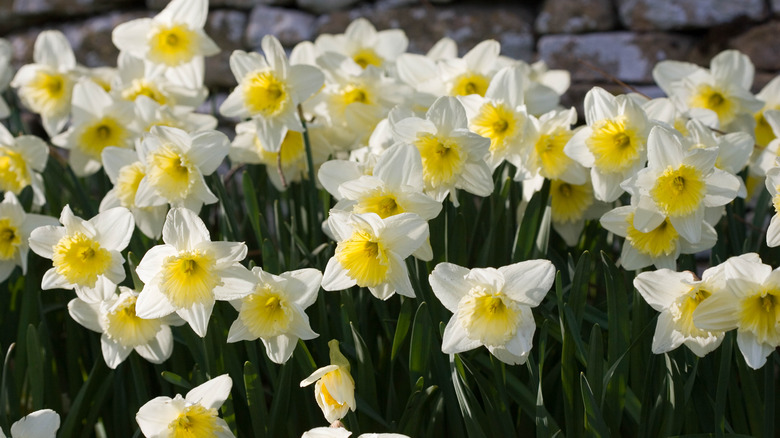Planning a balanced flower garden requires more skill and planning than you might think when you begin your gardening journey. One of the skills that gardening naturally provides as you learn its ins and outs is the importance of companion planting. Companion plants offer some sort of benefit to another plant when they’re planted close by. This might mean simply complementing its appearance or it could go a little deeper and refer to a contribution to the actual health of the other plant by helping to repel insects or weeds.
When it comes to spring bulbs, most gardeners plant a variety of flower bulbs in the fall. When spring arrives, these classic springtime blooms — like tulips, daffodils, and hyacinth — will emerge and produce the spring flowers we all know and love. If you’ve been wondering whether or not to include perennials in with your spring flower bulbs, the answer is yes and there is one particular flowering shrub that’s perfect for the job: azaleas. This striking shrub play can play a super helpful role in covering for your bulbs before and after blooming when their appearance is less than lush.
How to grow azaleas and spring bulbs together

Spring flowers are especially joyous, since they signal the end of winter and the transition into warmer, sunnier days. There are phases, however, during which spring bulbs can look a bit unsightly. This is where planting azaleas comes in. Some varieties of azalea are evergreen and bloom multiple times each year. These varieties are known as Encore azaleas and ReBloom azaleas. If you live in an area colder than zone, you’ll want to select a ReBloom variety, which is hardier for colder conditions. Planting these reblooming varieties together with your spring bulbs will help to camouflage the bulbs in their barer, less attractive, more awkward stages.
Azaleas come in vivid shades of red, pink, and purple. Pairing these shades with bulbs that will produce bright yellow, white, or blue spring blooms will create beautiful pops of contrast throughout your garden or landscaping. You may wish to plant your azalea as a backdrop to your spring bulbs, since it is a bushier and (often) taller plant. Once autumn arrives and you’ve chosen the colors you’d like to pair together, plant both in a spot that receives partial shade and offers well-draining soil. Since spring bulbs take in most of their sunlight before the tree leaves return, most varieties will grow nearly anywhere.
How to care for azaleas and spring bulbs together
One of the reasons azaleas serve so well as a companion plant to spring bulbs is the fact that they require very similar conditions and care. Once you’ve planted your spring-blooming bulbs and azalea in a semi-shaded, well-draining area, there isn’t much maintenance required. There are two main differences in the care requirements of azaleas and spring bulbs: once mature, azaleas prefer moister, more acidic soil. As far as moisture levels go, you can use a water bulb or other form of drip irrigation at the base of your azalea to provide it with enough moisture without flooding your spring bulbs.
You can also provide your azalea with a bit of extra acidity by sprinkling used or fresh coffee grounds at the plant’s base and lightly working them into the soil over its roots. Provide both plants with water once a week and supplement moisture for your azaleas using drip irrigation. Then, simply stand back and watch a gorgeous array of showy flowers dazzle your lawn or garden for months to come. Once your spring bulbs have stopped blooming, they no longer require additional watering until the next season.
